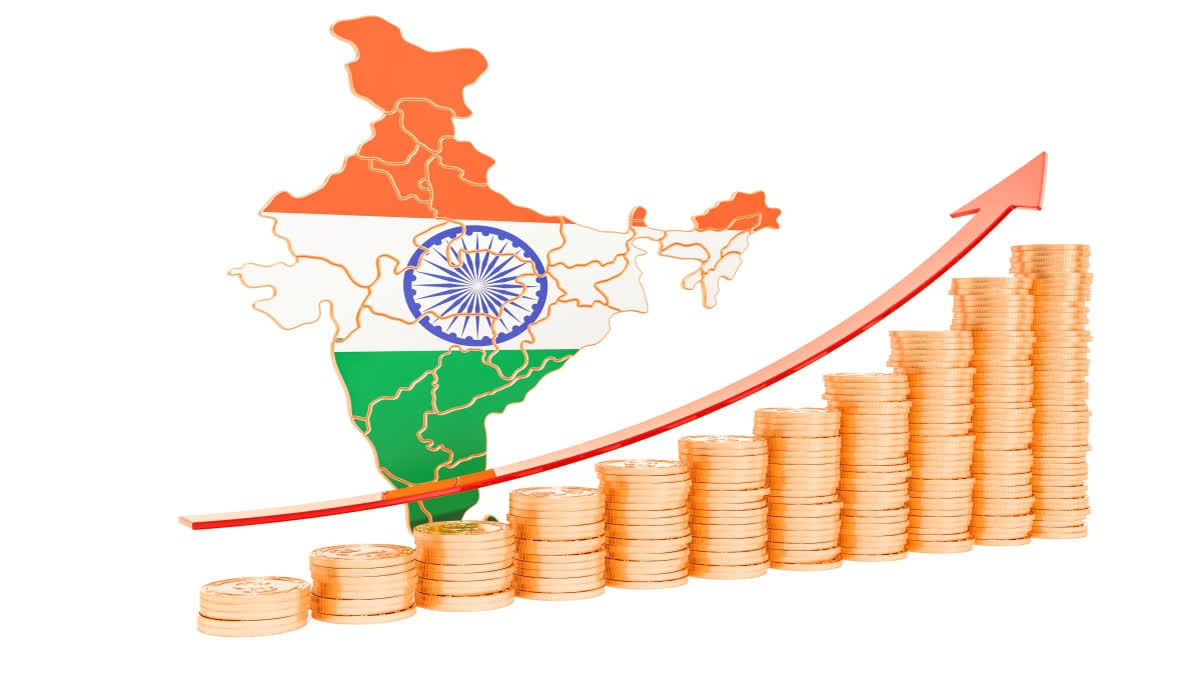Ahead of the Interim Budget this year the Economic Division of the Finance Ministry had presented the 'Review of Indian Economy’ in two chapters. The Economic Survey, a comprehensive annual report which displays the performance of the Indian economy in the past fiscal year, would be released a day before the budget session of every year, but this year due to the vote-on-account budget, the full Economic Survey will be released only before the full budget in July 2024.
The 'Review of Indian Economy', presented by the Finance Ministry presented the economic play of the policy intervention on the Indian economy during the last l0 years and the predictions for future growth. The ‘Review of Indian Economy’, released by the Finance Ministry presented that Indian economy has been maintaining the growth momentum despite the growing geopolitical tensions and global challenges.
The report presented that Indian economy would become a $7 trillion economy in the next six to seven years i.e. by 2030 and it is eminently possible for the Indian economy to grow by or above 7 per cent in FY24. However, it has also laid out four challenges confronting the Indian economy, including artificial intelligence's threat to services sector, the trade-off between energy security and economic growth and the availability of a skilled workforce.
The Finance Ministry's report notes that at times of an increasingly integrated global economy, India's growth outlook depends on the spill over effects of global developments and not just its domestic performance. Increased geo-economic fragmentation and the slowdown of hyper-globalisation are likely to result in further friend shoring and on shoring, which are already having repercussions on global trade and, subsequently on global growth.
And the recent events in the Red Sea region may have brought back concerns over reliance on global supply chains, further aggravating the slower growth in global trade in 2023, but today, the Indian economy is better placed than ever to take on these challenges because of the policies adopted and implemented during the last decade.
The government also views that the advent of artificial intelligence poses a big challenge to governments around the world because of the potential impact on services sector employment. This is of particular interest to India given that the services sector contributes to over 50 per cent to India's GDP. However, the projections of the India's GDP growth will be at pace and expected to grow by or above 7 per cent despite these challenges. Some analysts also predicted the similar growth momentum during the FY 25 too.
Given the issues of climate change being aggressively addressed by the policy makers worldwide, developing countries have come under scanner for their carbon targets and appetite to grow their economies. Under the net zero target, India has agreed to completely switch to renewables by 2070.
The trade-off between energy security and economic growth versus energy transition is a multifaceted issue having various dimensions: geopolitical technological, fiscal, economic and social and the policy actions being pursued by individual countries impacting other economies as presented in the report.
Finally, the government also views the availability of a talented and appropriately skilled workforce in the industry as a challenge to economic growth. Domestically, ensuring the availability of a talented and appropriately skilled workforce to the industry, age-appropriate learning outcomes in schools at all levels and a healthy and fit population are important policy priorities in the coming years.
